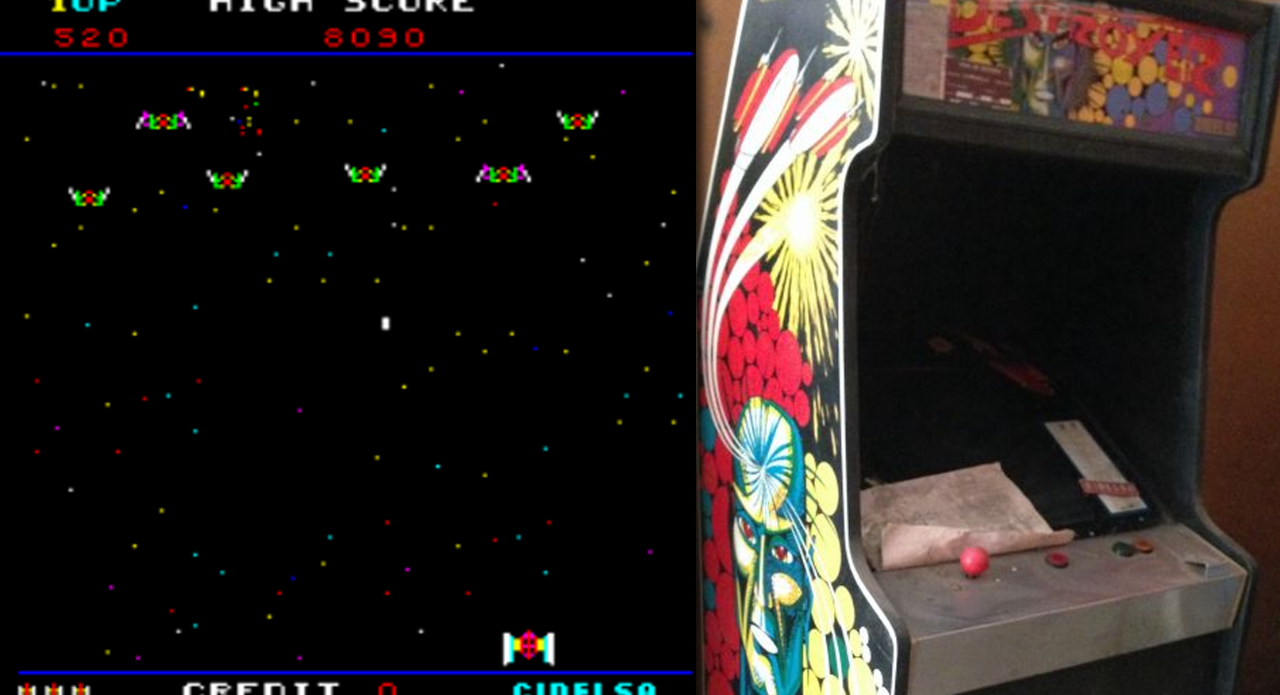"The first Spanish video game was La Pulga". This phrase so often seen in the media, which is also top of the list of results of any Google search and has expanded to the point of being embedded in the collective imagination of the Spanish video game sector, is just a myth that needs to be dispelled.
We cannot assert with absolute certainty that Destroyer was the first Spanish-developed video game, but it is indeed the first one that has survived through the years.
Let's go back to 1980, three years before Paco Suárez and Paco Portalo developed La Pulga. At that time, video gaming was just starting out, in the form of arcade machines. It was Playmatic, a Catalan company focused on the creation of pinball machines, who, after seeing the success of proposals such as Space Invaders (1978, Taito), decided to take a gamble on this industry that was still in its infancy, thus becoming the first pioneer in our country. Collaborating with EFOSA (Electronica Funcional Operativa S.A.), which was in charge of development, they created the CIDELSA label and released Destroyer. This time it seems that we are indeed talking about the first Spanish commercial video game.

The merit of Cidelsa and EFOSA lay not only in creating the first Spanish video game, but also in how it was made. In those days it was standard to import the boards of successful video games and then modify them; but Cidelsa decided to take a risk and create exclusive video games that were similar to the benchmark products of the time, but with their own design and features.
Destroyer followed the successful trend of games like Galaxian (1979, Namco) or the aforementioned Space Invaders. The player controls a small ship that must face complex waves of enemies until reaching a final big boss, a common element nowadays, but an innovative one in 1980. Destroyer was followed by Altair (1981), a sequel, Altair II, which has not survived the passage of time, and Draco (1981), another shooter, but starring a human being and using two sticks: one for movement and one for firing.
So can we be sure that Destroyer really was the first Spanish video game? Not really, only that it is the oldest one that has survived. A year earlier, in 1979, engineers from the Electrogame company created a prototype board for an arcade machine that contained the video game El Paracaidista. The project was canceled; it was never marketed and the surviving boards are damaged.
We can go back even further in time, more specifically to 1977. Recent video game archeology work by Parcela Digital media has brought to light the fact that a Ping-Pong video game was created at the Escuela Técnica Superior de Ingeniería de Telecomunicación of the Universidad Politécnica de Madrid for academic, non-commercial purposes. The game has not survived, but there are enough testimonies and documents to prove that it was the first video game made in Spain.
There could be more games that have fallen into oblivion and are just waiting for someone to rescue them which would mean that the entire chronology of the history of Spanish video games would have to be redone. But one thing is clear. La Pulga, which will always be an icon of our industry and its international success, marking the beginning of what many gamers consider to be the golden age of Spanish software, was not even close to being the very first Spanish video game.
References and links of interest:
DeVuego BD | Spanish video game database. (n. d.). DeVuego. https://www.devuego.es/bd/
Llaca, M. (2023, October 5). The 1977 Historia del Ping-Pong: first video game made in Spain created at the Polytechnic University of Madrid. https://parceladigital.com/articulo/historia-del-ping-pong-de-1977-primer-videojuego-espanol-creado-en-la-upm
Recreativas.org. (n. d.). Spanish arcade machines database Recreativas.org. https://www.recreativas.org/